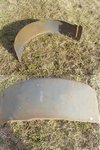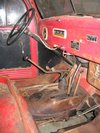 Chris McKovich Photo
Chris McKovich PhotoClick for larger image
 Chris McKovich Photo
Chris McKovich PhotoClick for larger image |
 Clint Dixon Photo
Clint Dixon PhotoClick for larger image |
 Todd Somers Photo
Todd Somers PhotoClick for larger image |
 Todd Somers Photo
Todd Somers PhotoClick for larger image |
 Todd Somers Photo
Todd Somers PhotoClick for larger image |
 Chris McKovich Photo
Chris McKovich PhotoClick for larger image |
 Steve Pellock Photo
Steve Pellock PhotoClick for larger image |
 Steve Pellock Photo
Steve Pellock PhotoClick for larger image |
 Glenn Reid Photo
Glenn Reid PhotoClick for larger image |
 Glenn Reid Photo
Glenn Reid PhotoClick for larger image |
 Click for larger image
Click for larger image |
 Marty MacKenzie Photo
Marty MacKenzie PhotoClick for larger image |
 Todd Somers Photo
Todd Somers PhotoClick for larger image |
 Click for larger image
Click for larger image |
 Click for larger image
Click for larger image |
 Click for larger image
Click for larger image |
 Todd Somers Photo
Todd Somers PhotoClick for larger image |
 Todd Somers Photo
Todd Somers PhotoClick for larger image |
